In Praise of the Peloponnese: 7 Reasons to Visit
The Peloponnese has simply everything you could want from a Greek destination – and then some. Ancient history? How about Ancient Olympia, the birthplace of the Olympic Games, just for starters. Medieval history? Atmospheric Venetian and Byzantine castle towns abound. More modern history? The Greek revolution started here, for crying out loud.
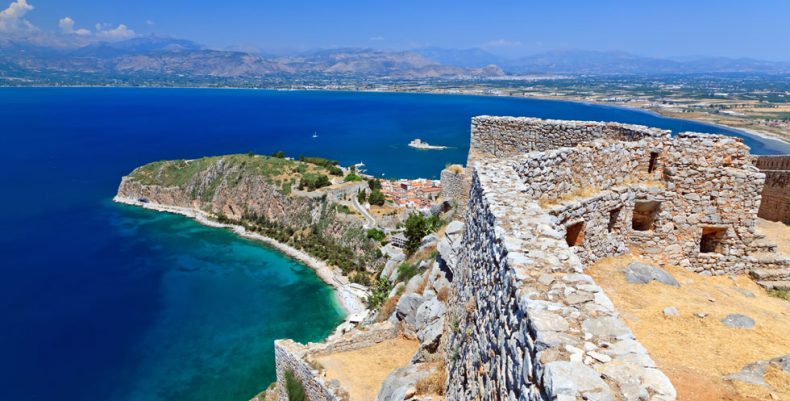
Palamidi castle and Nafplion city, Greece
How about sandy beaches that stretch for miles? Check. Rugged mountainous landscapes redolent with the scent of wild herbs? Check. Lush forests and waterfalls? Check. Incredible food and wine? Check and check. World class resorts? Just say how big you want your private infinity pool.
The list goes on and on, which makes the biggest challenge simply deciding where to go in this incredibly diverse region. Fortunately, vacation experts Hellenic Holidays are here to give you guidance.
Below are just 7 reasons to make the Peloponnese the focus of your next Greek vacation.
1. The Ancient History
Even for a country with as rich a history as Greece, the Peloponnese has more than its fair share of sites that have shaped Western civilization as we know it. This is truly a land where myths were born and legends were forged.

The entrance of the “Treasury of Atreus”, Ancient Mycenae, Argolida, Peloponnese, Greece
The Peloponnese was home to the glorious Bronze Age Mycenaean civilization, and to visit the ruins of ancient Mycenae – home of the fabled Trojan war hero Agamemnon – is to visit one of the great prehistoric sites of the world. Another must is, of course, the Sanctuary of Zeus in Ancient Olympia, there where the first Olympic Games were held. To walk – or run – in the path of the world’s first athletes in the ancient stadium is to deeply connect with the Games’ ancient roots.
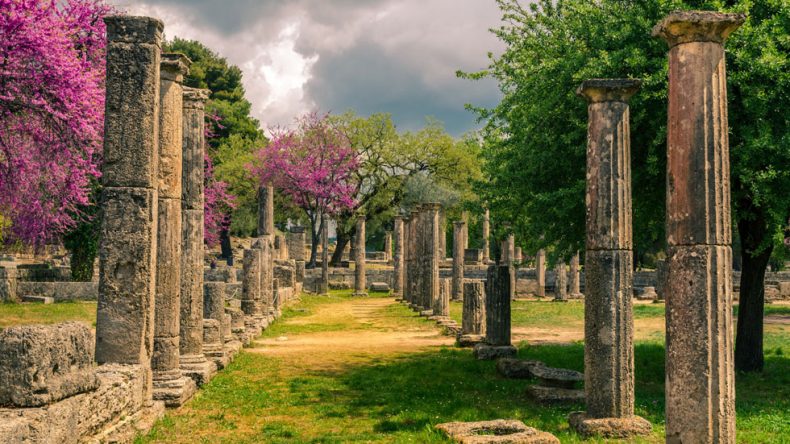
The archaeological site of Ancient Olympia.
And we’re only getting started. Ancient Messene is yet another site that will transport you to the world of the ancient Greeks, full of myths and mystery. Or visit the palace of Nestor in Pylos, yet another key Mycenaean site that was at the peak of its powers over 3,000 years ago.
2. The Medieval History
Of course, history did not end with the fall of the great ancient Greek civilizations. Due to its richness and geography, throughout the ages the Peloponnese has been coveted by the great powers of the Mediterranean. The Byzantines, Venetians, Franks, Ottomans and others sought to control its ports and cities which were key stopping points along vital trade routes linking East and West.
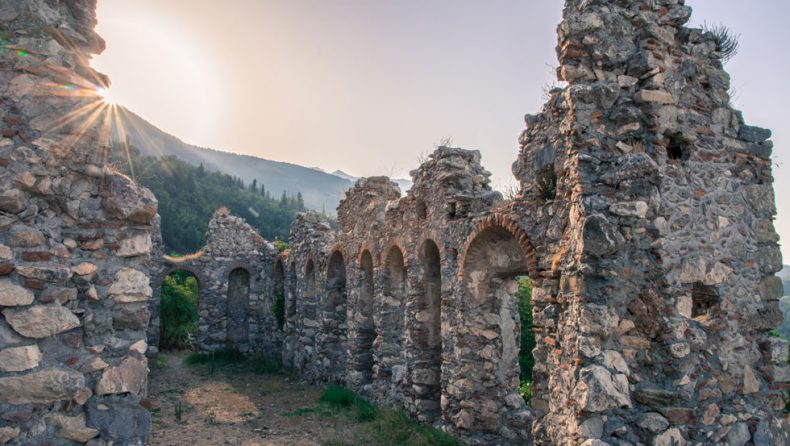
Ghost town ruins in Mystras, Lakonia, Greece
This has left a legacy of remarkable castle towns across the Peloponnese: Nafplio, Monemvasia and Mystras along the eastern coasts and Pylos, Koroni and Methoni to the west. With their charming narrow streets and medieval fortifications, these onetime strongholds will have you thinking that you have wandered onto a set of Game of Thrones.
3. The Boundless Nature
The only frustration nature lovers are likely to experience in the Peloponnese is the sense that there is too much to fully explore; few places on Earth have such a diversity of landscapes and ecosystems in such a small space.
This diversity is borne from the fact that the Peloponnese is a great wrinkled landmass surrounded by the salty rich waters of the Mediterranean. Its tall peaks reach up into the clouds and gather snowfall in the winter. In the spring the snowcaps slowly melt, feeding streams, rivers and waterfalls which, over aeons, have carved deep gorges of indescribable beauty.
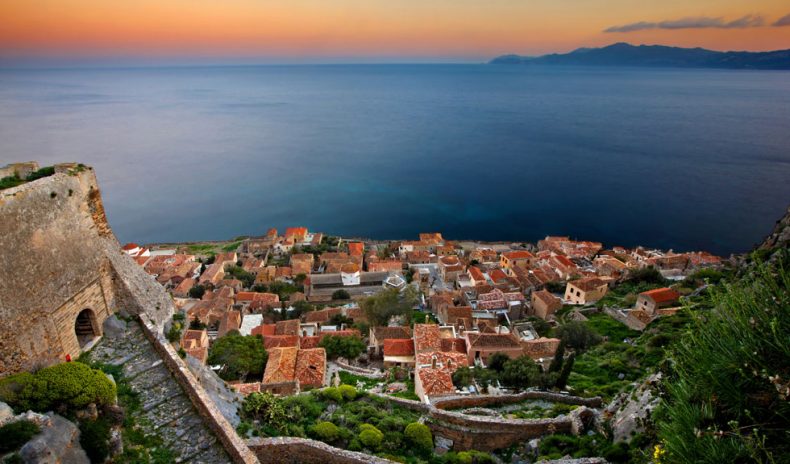
Monemvasia, Lakonia, Greece
Forests of fir and pine meet plane and oak trees at lower elevations. Where the mountains give way to rolling foothills, valleys and plains, countless acres of age-old olive and citrus groves provide bountiful fruit. And further down on the coast, lakes and wetlands offer food and shelter to dozens upon dozens of species of native and migratory birds and myriad other wildlife.
4. The Outdoor Activities
Needless to say, such a diverse landscape is a natural playground for any outdoor enthusiast. Whether a casual hiker, adventurous mountain biker or dedicated mountaineer, there are innumerable trails to follow – some leading to mountain peaks, others to trout rich springs and creeks.
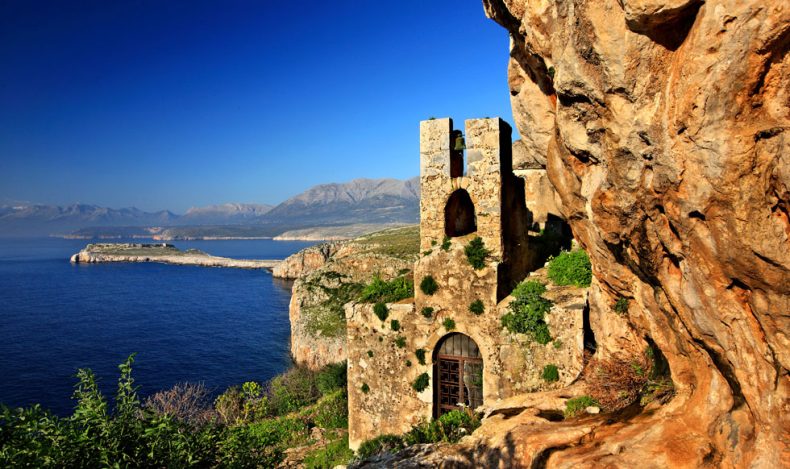
Mani, Lakonia
Rock climbers will find a paradise in Leonidio, where hundreds of routes have been created along the sheer rock faces. In the winter skiers can take to the slopes of the Kalavryta ski resort in the north, while in the spring the rivers lend themselves to whitewater rafting and kayaking.
Along the coast swimmers and sunbathers will find everything from pristine secluded coves to miles-long sandy beaches with rolling dunes. Even golfers are well catered to, with the Costa Navarino resort in Messinia offering two world-class 18-hole signature golf courses.
5. The Food and Wine
With such a rich natural landscape it is little wonder that the Peloponnese also has some of the best food in Greece.
The famed olive groves of Kalamata in the south produce exceptional olives and olive oil in abundance; Argos is renowned for its citrus groves; Nemea is an ancient wine country where today a new generation of winemakers are producing fascinating wines using new techniques and ancient varieties; Mount Taygetos is a legendary source of a dizzying array of wild herbs.
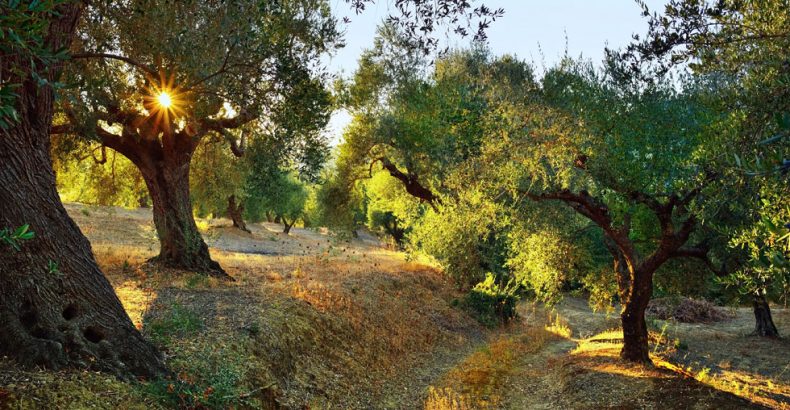
Olive trees in Kalamata, Messinia, Greece
And those are just a few of the highlights; everywhere across the Peloponnese small family-run farms produce everything from fragrant fruit and vegetables to excellent meat and cheeses.
With such an array of exceptional raw materials to draw from, and a long history of making the most of everything, it is little surprise that the cuisine of the Peloponnese is second to none.
6. The Ease of Travel and World-Class Resorts
With so much to offer it may seem somewhat surprising that the Peloponnese is less famed as a tourism destination than other areas in Greece. But the fact is that until relatively recently the Peloponnese lagged in terms of good quality tourism infrastructure.
But those days are now firmly in the past. Heralding a new age for the Peloponnese was the opening in 2010 of the exceptional Costa Navarino resort in the region of Messinia, now ranked among the top 20 destinations in the world by the travel editors of National Geographic. This major undertaking has revitalized an entire region and ushered in a new era for the entire Peloponnese.
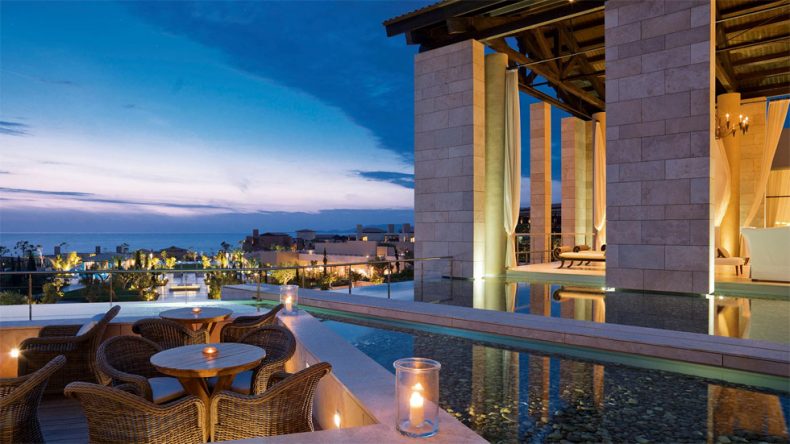
Costa Navarino
Meanwhile major highways have also recently been completed allowing easy, swift and safe travel by road. Most major destinations on the Peloponnese are now only a few hours by car from Athens.
And for those who prefer to fly, the airport of Kalamata in the south can be reached by both domestic and international flights.
7. Because this List Is Woefully Incomplete
Lovers of the Peloponnese will undoubtedly note that this list is wanting. After all, there has been no mention so far of ancient Corinth or the entire Mani peninsula; of Sparta; of Epidaurus; of the gorgeous mountain villages like that of Dimitsana; of the nearby islands like Spetses, Hydra, Poros or Elafonisi; and much much more.
Indeed, there is so much to the Peloponnese that it would take a hefty book to even begin to cover it all.
Which is simply yet another reason to visit.
